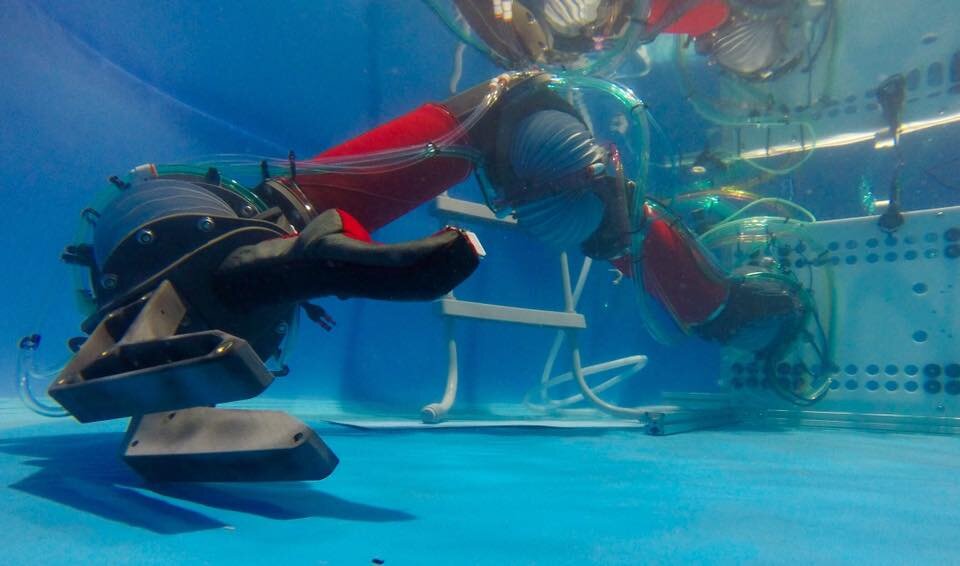Going Soft: Taking (Un)design Cues from Nature
Standing in front of SpaceX’s newest rocket a few weeks ago, Elon Musk gave a captive audience a valuable insight into what, at first blush, may seem like a counterintuitive way to think about design.
“Over and over…the tendency is to complicate things. The thing I’m most impressed with…is ‘what did you undesign?’ Undesigning is the best thing. Just delete it. That’s the best thing.” he said.
And it’s not terribly far from the thinking behind the original concept for Otherlab’s Pneubotic Manipulators — a version of which, intended for space and deep sea exploration, just recently received $750k in Sequential Phase II funding from NASA. At the outset, the idea was to create the simplest, lightest robot possible. That turned out to be a robot with no hard edges, hinges, or bearings. Instead, these Fluidic Robots are soft and sewn together. Rather than get their structure from hard materials, these robot manipulators take shape and move on the strength of pressurized fluid, allowing their stiffness and force to change with the needs of the task at hand (no pun intended).
Figure 1: Conceptual robot using a sealed fluidic manipulator to take samples from liquid pools.
Soft Robotic Manipulators Prototype
In much of mechanical engineering and design, conventional wisdom says that qualities that can withstand the forces of nature — namely hard, stiff, and rigid — are ideal. To achieve those qualities, as human engineers, we tend to add mass. We layer on steel or concrete or plastic. We reinforce or coat or shield.
But going soft, in its own way, is a kind of undesigning. By stripping away the extra steel or plastic or concrete — really, by rethinking the idea that natural forces are to be resisted in their entirety — we can end up with better and more adaptable tools. Instead of fighting natural forces, we can look to nature — to biology — for insight. Where telephone poles often fail under the force of high winds, trees tend to fare better. Why? Because they are compliant. They bend. They change shape. They shift and share the load of external forces. In engineering, these kinds of insights can make for machines that are lighter without sacrificing strength. Lighter also means more efficient, which can mean cheaper, too.
A semi-rigid 7DoF manipulator Otherlab is developing for the Office of Naval Research.
Soft may also just make for more effective tools, particularly in unstructured, natural environments with unpredictable and ever-changing conditions — say, in the deep sea, or when working in conjunction with soft-bodied humans like astronauts. Traditional submarines, for instance, are designed to withstand great pressure. A fluid-filled robot, on the other hand, can be at the same pressure as the surrounding ocean, no matter the depth, taking the need to resist great pressure essentially out of the equation.
And soft is good for more than space and deep sea exploration. Just last month, the ARPA-E ATLANTIS program granted Otherlab $2.6 million to develop wind power systems that eliminate the need for stiff (and expensive) materials by actively controlling how those systems interact with the environment.
As Elon said in his launch talk, “the best part is no part…It weighs nothing, costs nothing, can’t go wrong.” He may be on to something there.
More on the future of soft robots and Otherlab’s related IP:




